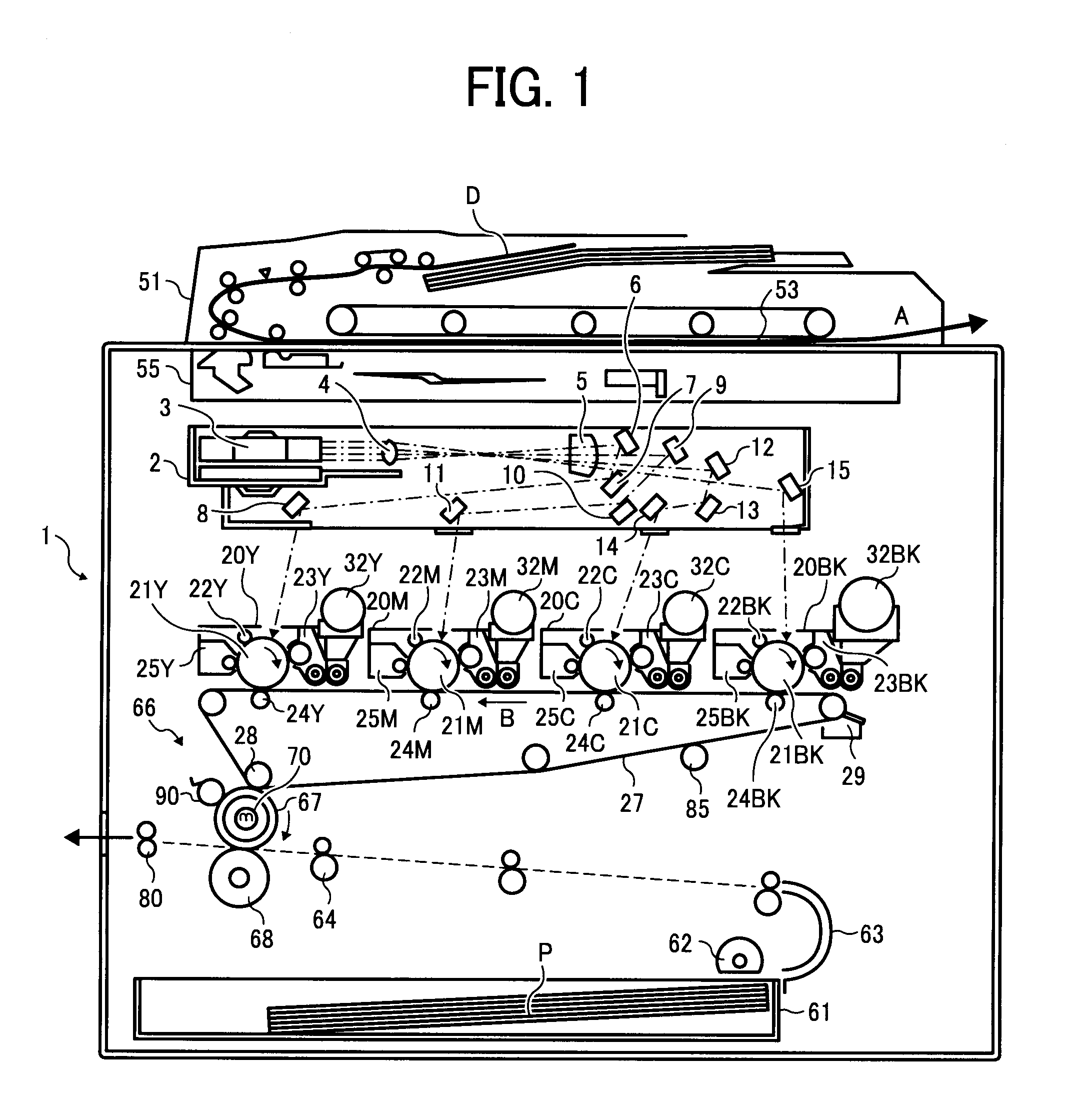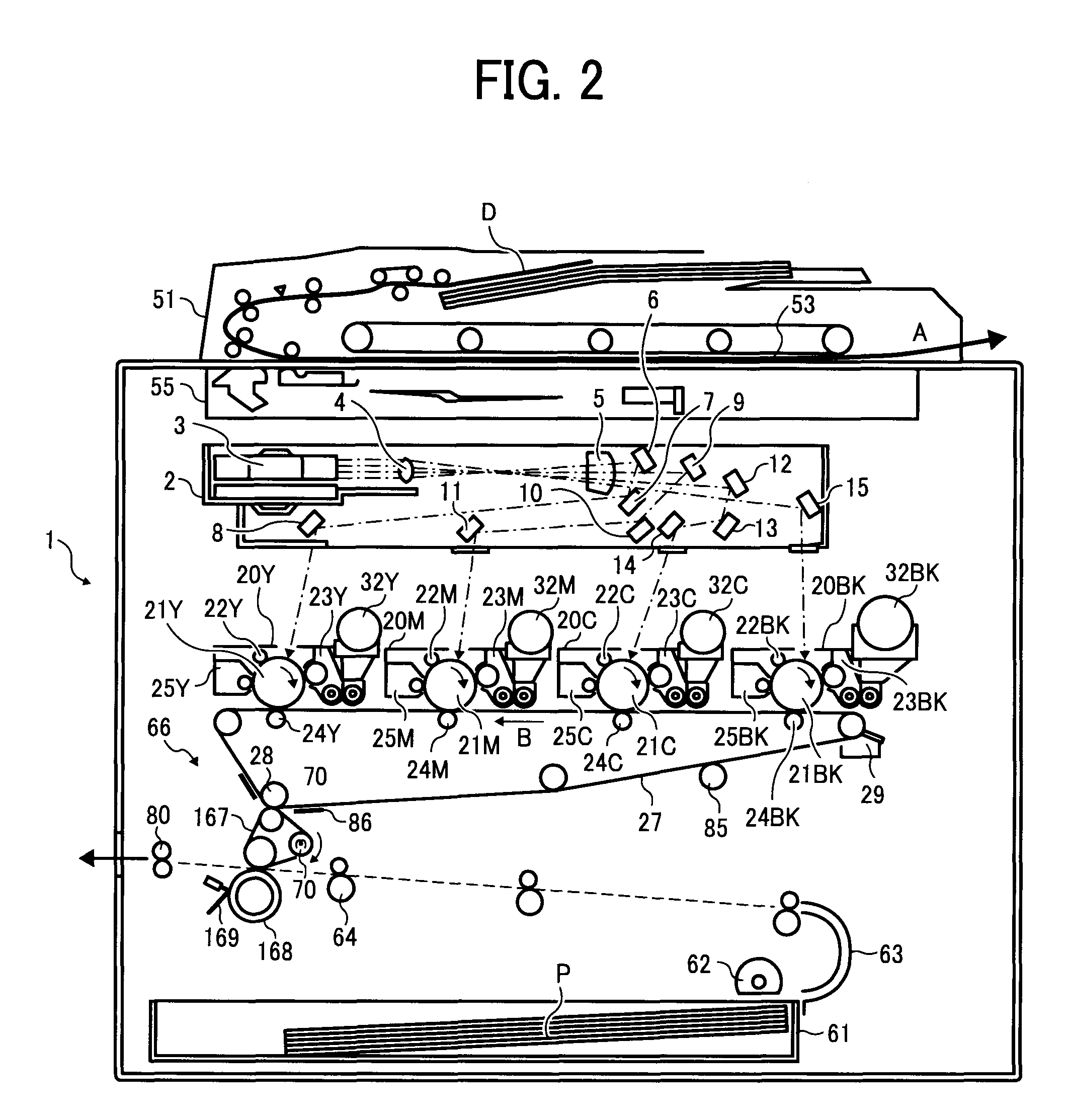Cleaning device, fixing device, and image forming apparatus
a technology of fixing device and cleaning device, which is applied in the direction of electrographic process apparatus, instruments, optics, etc., can solve the problems of inability to follow the surface roughness, inability to produce an uneven image, and large number of toner particles which are neither transferred nor fixed on the fixing member, so as to avoid uneven production, prolong the warm-up time, and remove toner particles reliably
- Summary
- Abstract
- Description
- Claims
- Application Information
AI Technical Summary
Benefits of technology
Problems solved by technology
Method used
Image
Examples
Embodiment Construction
[0055]Example embodiments will now be described in detail referring to the drawings, wherein like reference numerals designate identical or corresponding parts throughout the several views thereof.
[0056]FIG. 1 is a schematic view illustrating an image forming apparatus according to an example embodiment of the present invention. A main body 1 of a color copier serving as an image forming apparatus houses a writing unit (i.e., a light emitting unit) 2 configured to emit a laser light beam based on image information acquired from a read image; process cartridges 20Y, 20M, 20C, and 20 BK respectively forming images of yellow, magenta, cyan, and black toner; photoconductors (i.e., image bearing members) 21Y, 21M, 21C, and 21BK respectively included in the process cartridges 20Y, 20M, 20C, and 20 BK; chargers 22Y, 22M, 22C, and 22BK configured to charge the photoconductors 21Y, 21M, 21C, and 21BK, respectively; developing devices 23Y, 23M, 23C, and 23BK configured to develop an electrost...
PUM
 Login to View More
Login to View More Abstract
Description
Claims
Application Information
 Login to View More
Login to View More - R&D
- Intellectual Property
- Life Sciences
- Materials
- Tech Scout
- Unparalleled Data Quality
- Higher Quality Content
- 60% Fewer Hallucinations
Browse by: Latest US Patents, China's latest patents, Technical Efficacy Thesaurus, Application Domain, Technology Topic, Popular Technical Reports.
© 2025 PatSnap. All rights reserved.Legal|Privacy policy|Modern Slavery Act Transparency Statement|Sitemap|About US| Contact US: help@patsnap.com



